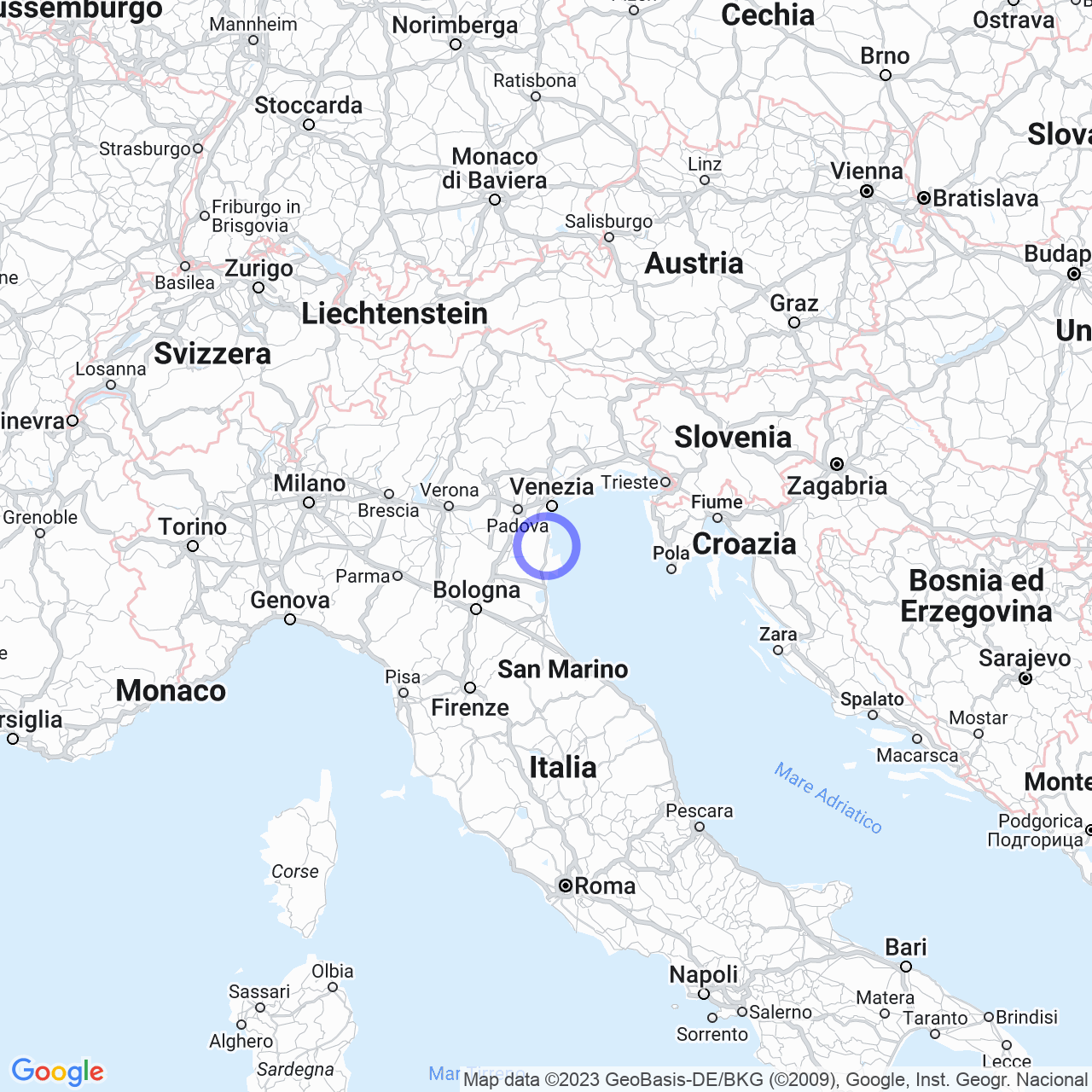Rosolina
Rosolina: a unique place in the Delta del Po
Rosolina, also known as ''Roxołina'' in Venetian language, is an Italian municipality in the province of Rovigo in Veneto. With a population of 6225 inhabitants, it is located in the Delta del Po region, about 40 km from Rovigo, 65 km from Venice and 55 km from Padua.
Physical geography

Territory
Rosolina extends over the changing areas of the Delta del Po and includes both recently formed and older parts. The municipality is located along the fourth cordon of dunes in the delta, dating back to the Etrusco-Roman era.
Hydrography
One of the two main branches of the Po river, the Po delle Fornaci, flows into Rosolina. The Tramontana branch flowed into the current Piazza San Giorgio in Rosolina Mare and the Levante branch is now downgraded to a canal.
Climate
Rosolina's climate is typical of the Delta del Po region, characterized by hot and dry summers and mild and humid winters.
The history of Rosolina
The name Rosolina may derive from ''roggia'', which means canal or ditch in the local dialect. The territory of Rosolina has a long and complex history and hosts remains from past eras.
In the second half of the sixteenth century, the Po di Tramontana threatened to bury the lagoon and damage the Venetian ports of Chioggia and Venice. To avoid this, Porta Viro was cut, diverting the Po to the south. In 1612, the Tramontana branch was named. In the following years, the mouth was obstructed and the locality became Boccavecchia.
After centuries of aggregation with Loreo, Rosolina became an autonomous municipality of the Napoleonic Kingdom of Italy in 1806. It was reunited with Loreo in 1811 and became autonomous again with the arrival of the Austrians in 1816. In 1851, it was aggregated to the province of Rovigo and in 1866, with Veneto, it was annexed to Italy. It returned to being a fraction of Loreo between 1929 and 1948 and became an independent municipality on January 1, 1948.
The territory and its toponymy
Rosolina has both ancient and recently formed parts. References to the history of the territory are frequent in the city's toponymy as well. Many streets and squares in the city are dedicated to wealthy families and the Venetian and Venetian-Venetian patriciate, who organized the agricultural and valley exploitation of the new lands.
For example, Ca' Diedo, Ca' Morosini, Moceniga, and the Veniera, Sagreda, Centona and Capitania valleys are just some of the family names associated with the streets and squares of Rosolina.
Conclusions
In summary, Rosolina is a unique municipality in Veneto, located in the Delta del Po territory. The city has a long and complex history, which is reflected in its toponymy. With a strategic location between the cities of Rovigo, Venice, and Padua, Rosolina is an ideal destination for nature and history lovers.
